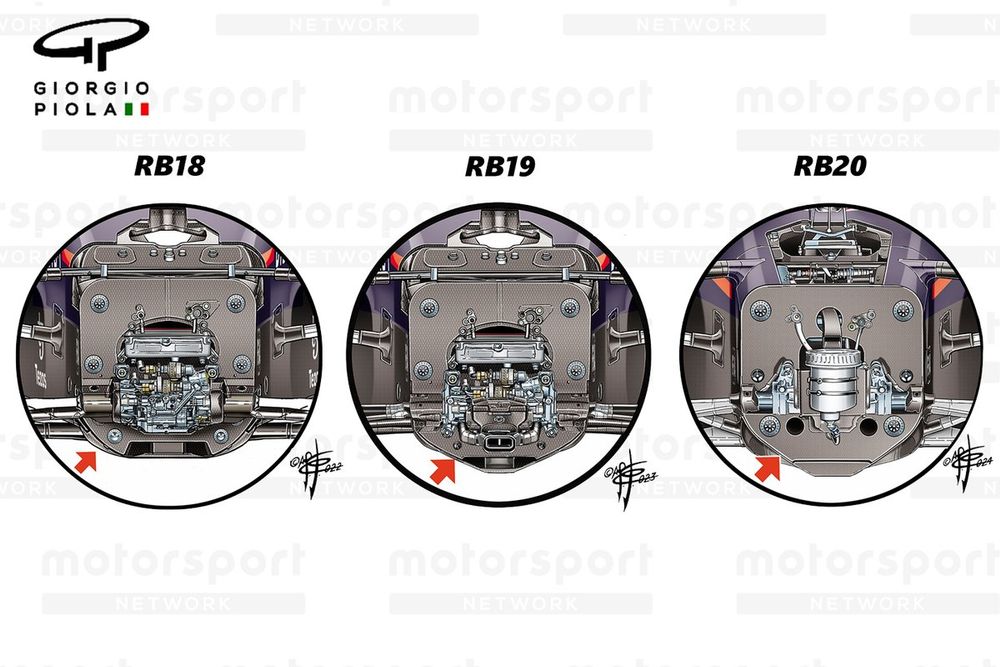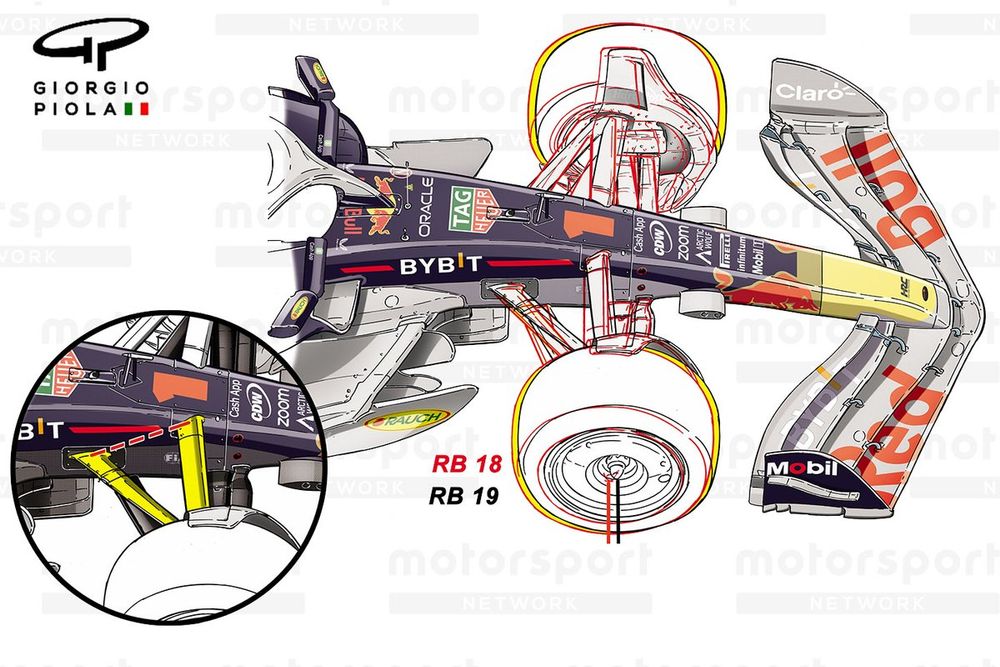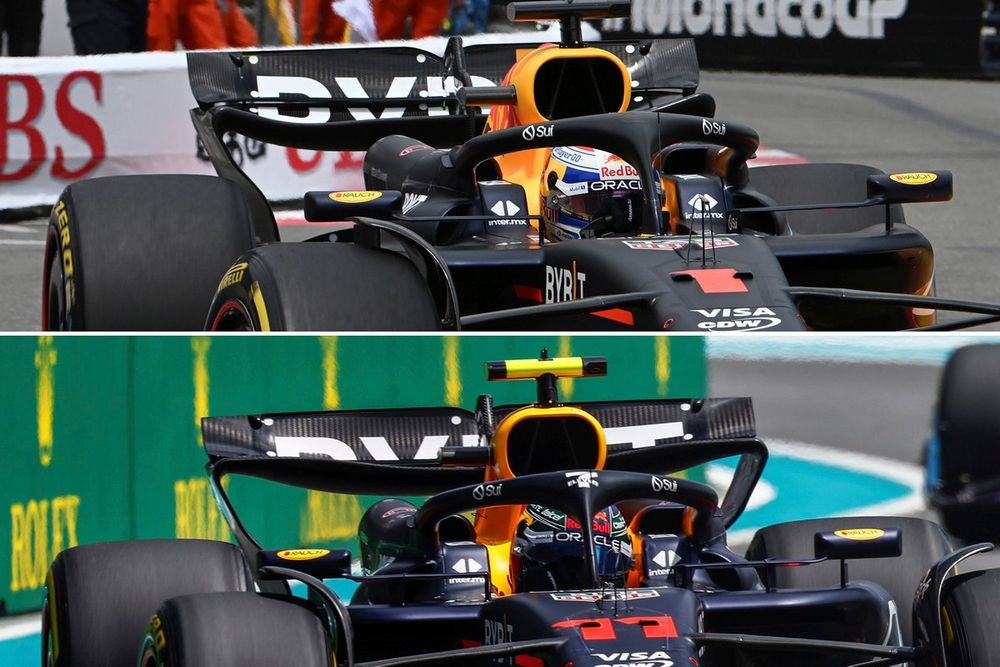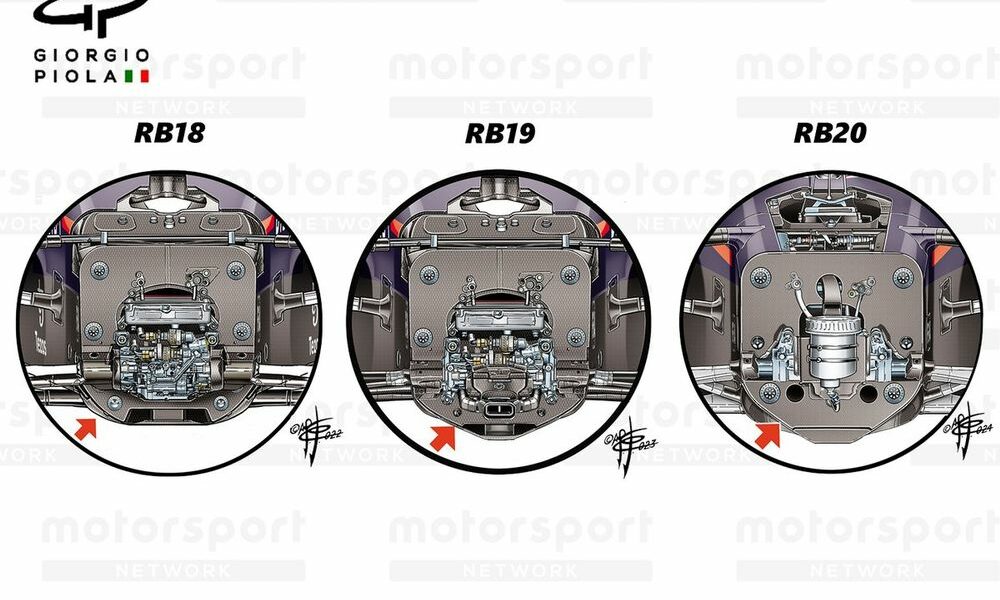As Max Verstappen confessed on Saturday, an inability of the car to ride the kerbs in the same way as rivals, whilst also failing to deal with Monte Carlo’s bumpy track surface, meant inherent weaknesses had been ‘found out’ now that the squad no longer had a comfortable performance margin at the front.
There appeared no immediate answer for what triggered Red Bull’s troubles, with the team further confused by the fact that the softer it ran the car in Monaco the worse things got.
However, it was interesting to hear Red Bull team principal Christian Horner state in the aftermath of the race that perhaps suspension tweaks for this year could be the culprit.
“The VCARB [RB] car is running with our suspension from last year and didn’t seem to have the same issues,” he said. “So, we need to understand if it’s something that we’ve introduced.”
However, whilst Tsunoda and Ricciardo had a better time of it in Monaco, Horner also admitted that the problem was not something that had suddenly emerged this season.
“We saw it in Singapore last year as well,” he said. “So, we’ve had another example of that. We know it’s an area of the car we need to work on.”
So what could be causing its troubles?
Refining the design
Red Bull has used a pull-rod layout at the front and a push-rod layout at the rear of its car since the regulations changed in 2022. It has, however, continued to optimise its design.
But it is those optimisations that may hold the answer as to what has happened. While improvements would be limited in terms of enhancing the suspension’s kinematic performance, there have been opportunities to refine this area of the car for aerodynamic benefits.
And it could be that in pursuing aerodynamic gains to keep the RB20 at the front of the field, it has perhaps compromised some of the ride aspects of the car too much.
It is ultimately all about balancing out losses in one area (ride) versus gains in another (aero). If there was a trade-off to only slightly degrade the suspension’s operating range in exchange for a more substantial aerodynamic gain, then that would likely be considered something a team would be willing to take.
Furthermore, if that mechanical compromise were only felt at one end of the spectrum, such as on challenging kerbs and bumps, then it might have been something worth living through in exchange for the gains it delivered at those smooth venues where aero performance is king.
This potential downside would also be less problematic when the competition was much further adrift, but it is a different thing when rivals are as close as they are now.
What Red Bull changed

Red Bull Racing RB20 chassis section comparison
Photo by: Giorgio Piola

Red Bull Racing wheelbase comparison (Anti-dive, inset)
Photo by: Giorgio Piola
In terms of Red Bull’s development over the regulation cycle, the team has clearly made changes to and around the front suspension to improve performance.
The layout of the components has remained largely the same throughout though, with Red Bull utilising its high-mounted and novel mono-arm design for the upper wishbone.
The rear leg is mounted low to introduce more anti-dive and is positioned more effectively from an aerodynamic standpoint (yellow highlight, inset, right image).
Tracing the lineage of the chassis and bulkhead redesign process that Red Bull has chartered through the three years of these regulations shows that the team has progressively carved out more of the keel to improve the flow conditions beneath that section (red arrow).
Consequently, the inboard position of the lower suspension elements and the steering assembly have been moved throughout this period accordingly too.
Meanwhile, the team has also made changes to its wheelbase during this period, in order to find a better front-to-rear mechanical and aerodynamic balance.

Red Bull RB20 rear wing comparison
Photo by: Uncredited
The issues faced by Red Bull appear to lie more in the combination of a higher-downforce aero package that runs at lower speed on bumpy street circuits.
These characteristics, paired with having to soften its suspension and likely having to raise the car’s ride height to counter the bumpy track surface and allow them to ride the kerbs, then contribute to a lacklustre response from the driver’s inputs and a challenge of getting on the throttle coming out of the corners.
But while Monaco proved to be uncomfortable territory, Red Bull knows that its performance isn’t indicative of how the car will perform everywhere this season.
And the next race in Canada could be especially fascinating as it is a place where kerb-riding can be important, but resurfacing work may well have eliminated a number of its previous bumps.

